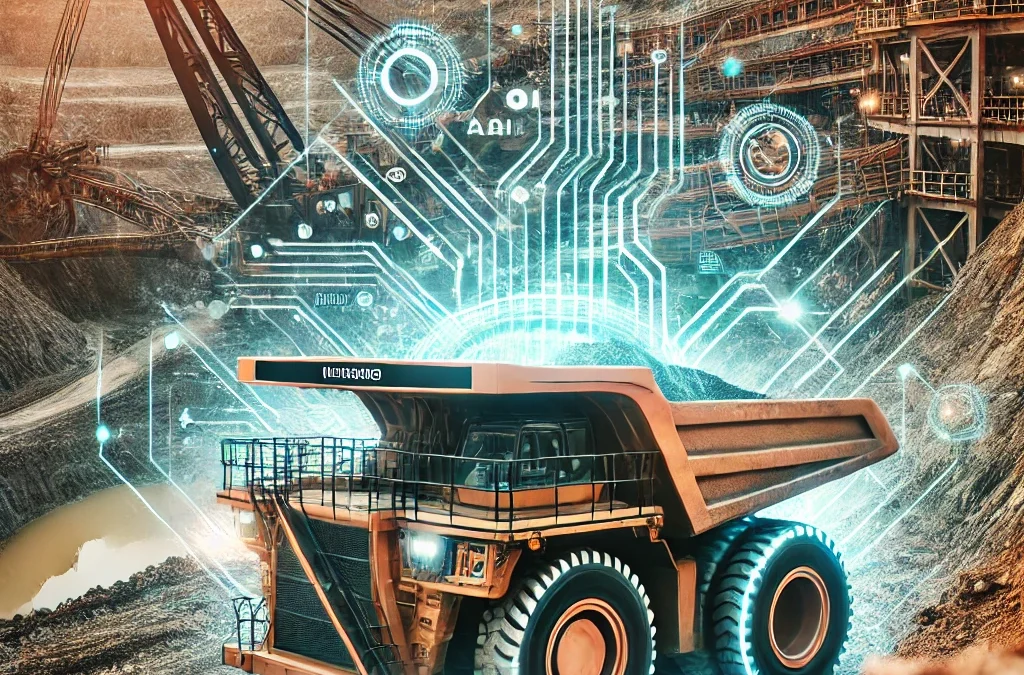In the mining industry, downtime is the enemy. But in the race to prevent equipment failures, many companies fall into a costly trap: over-maintenance. While proactive maintenance is vital, excessive or poorly timed maintenance can bleed money, waste resources, and even increase the risk of failure. AI-driven insights are rewriting the rules, offering a smarter approach to maintenance that strikes the perfect balance.
1. The Paradox of Over-Maintenance
Mining companies have long relied on rigid maintenance schedules to keep equipment running smoothly. However, this “better safe than sorry” approach often leads to:
- Unnecessary Repairs: Performing maintenance on equipment that doesn’t need it wastes time and money.
- Reduced Equipment Lifespan: Over-servicing can lead to premature wear by tampering with components unnecessarily.
- Operational Inefficiencies: Taking equipment offline for maintenance impacts productivity, even when it’s avoidable.
- Increased Failure Risk: Paradoxically, over-maintenance can introduce human error or disrupt well-functioning systems, leading to unexpected failures.
2. Why Traditional Maintenance Strategies Fail
Most mining operations rely on three traditional maintenance strategies:
- Reactive Maintenance: Fix it when it breaks. This leads to costly downtime and emergency repairs.
- Preventive Maintenance: Follow a fixed schedule regardless of actual equipment condition.
- Predictive Maintenance (Manual): Use historical data to anticipate issues, but often without real-time insights.
While preventive maintenance seems like the safer option, it often results in over-maintenance. Predictive approaches, on the other hand, are limited by the accuracy and timeliness of data. This is where AI steps in.
3. How AI Redefines Maintenance
AI doesn’t just monitor equipment—it transforms the very way maintenance is planned and executed. Tools like Jebi’s AI Pipeline leverage real-time data to eliminate the guesswork, creating a dynamic and precise approach to maintenance.
- Condition-Based Maintenance: AI continuously monitors equipment health using real-time data from sensors and cameras, ensuring maintenance is performed only when needed.
- Failure Forecasting: Machine learning models analyze wear patterns and operating conditions to predict failures with pinpoint accuracy.
- Resource Optimization: By servicing equipment at the right time, AI reduces resource waste and ensures spare parts are used efficiently.
“With AI-driven maintenance, we’ve cut unnecessary repairs by 40% and saved over $1.5 million annually.” – Mining Operations Director
4. The Invisible Benefits of Smarter Maintenance
The financial savings from optimized maintenance are obvious, but the ripple effects across operations are just as impactful:
- Reduced Environmental Impact: Avoiding unnecessary repairs minimizes the use of consumables like oils, filters, and parts, reducing waste and emissions.
- Enhanced Safety: Maintenance performed only when necessary reduces the frequency of human intervention in potentially hazardous environments.
- Increased Uptime: With equipment serviced at the optimal moment, operations flow more smoothly, maximizing productivity.
- Improved Equipment Longevity: Components last longer when maintained based on actual wear and usage rather than arbitrary schedules.
5. Real-World Insights: Where Over-Maintenance Hides
Over-maintenance often lurks in areas that are hard to track with traditional methods:
- GET Replacement: Ground Engaging Tools are frequently replaced too early out of caution, driving unnecessary costs.
- Hydraulic Systems: These systems are prone to false positives for maintenance needs, leading to redundant checks and servicing.
- Heavy Vehicle Components: Tires, brakes, and suspensions are replaced on schedules that don’t account for varying site conditions.
AI-powered systems like GET Smart and Jebi Central bring visibility to these hidden costs, enabling smarter decisions.
6. The Future of AI-Driven Maintenance
As AI continues to evolve, its potential in mining maintenance grows exponentially:
- Autonomous Maintenance Recommendations: AI systems will soon be able to schedule and trigger maintenance autonomously, minimizing human oversight.
- Edge Computing Integration: Real-time processing at the equipment level will reduce latency and improve response times.
- Cross-Site Learning: AI models can learn from multiple sites, applying insights from one operation to optimize maintenance across a fleet.
Conclusion: From Proactive to Intelligent Maintenance
The goal isn’t just to avoid downtime—it’s to optimize every facet of maintenance to maximize ROI. Over-maintenance, once seen as the cost of doing business, is no longer necessary. With AI-powered tools, mining companies can maintain their equipment smarter, faster, and more sustainably.
At Jebi Technologies, we’re not just improving mining operations; we’re redefining them. By embracing AI-driven maintenance, you can achieve the perfect balance between safety, efficiency, and cost-effectiveness.
